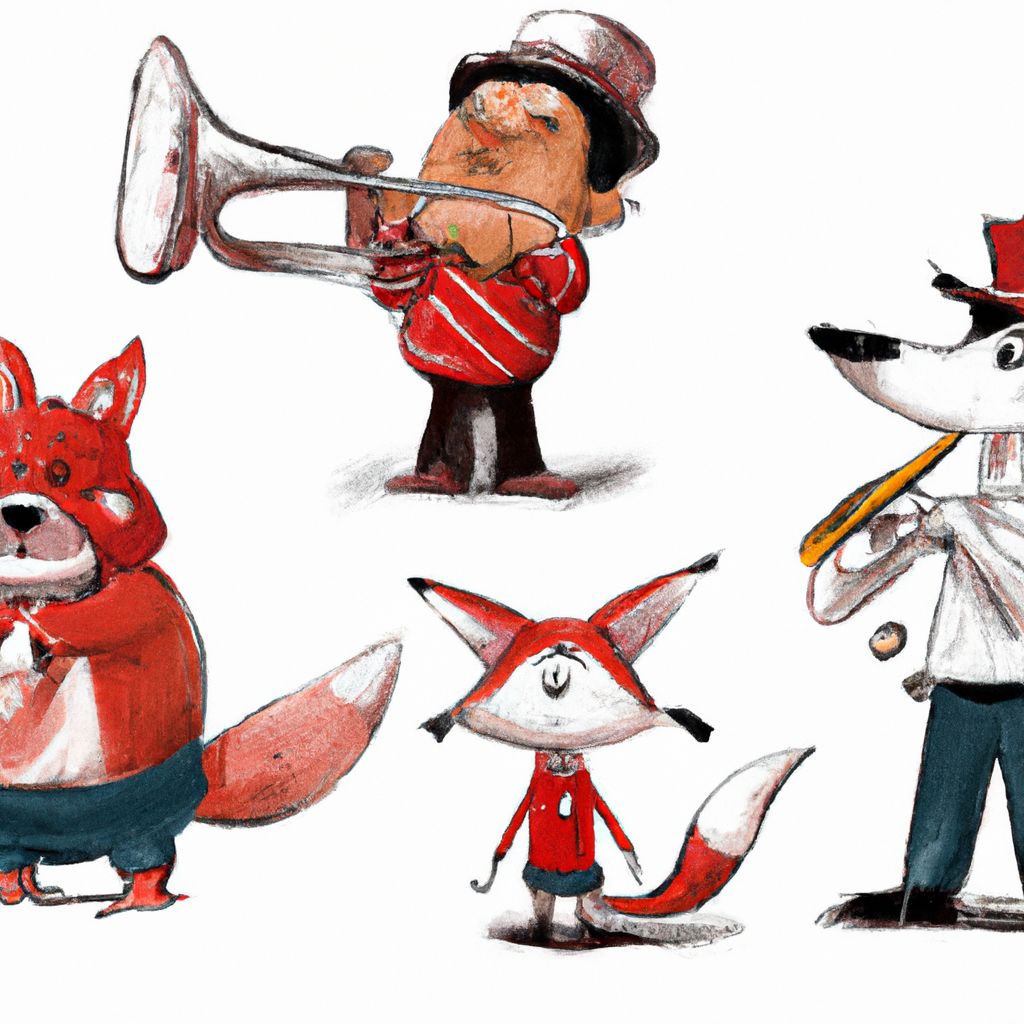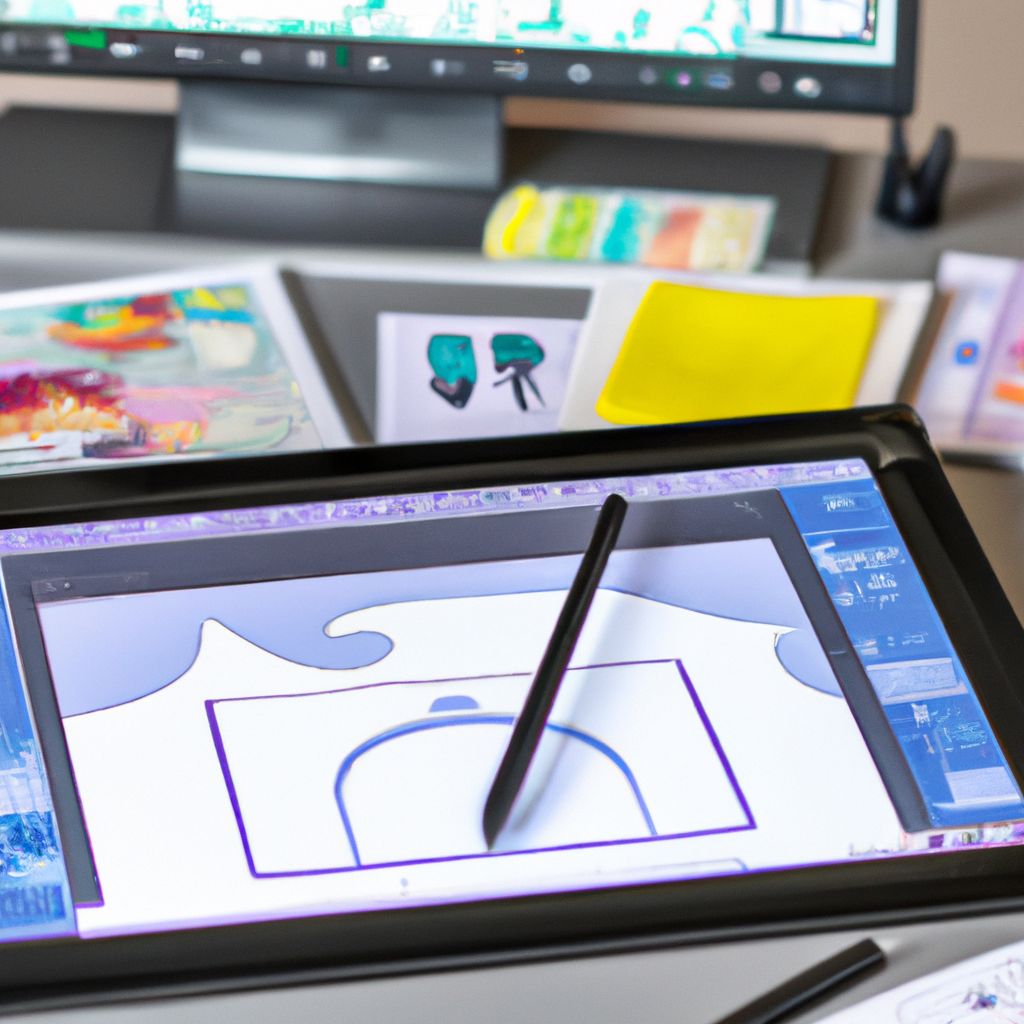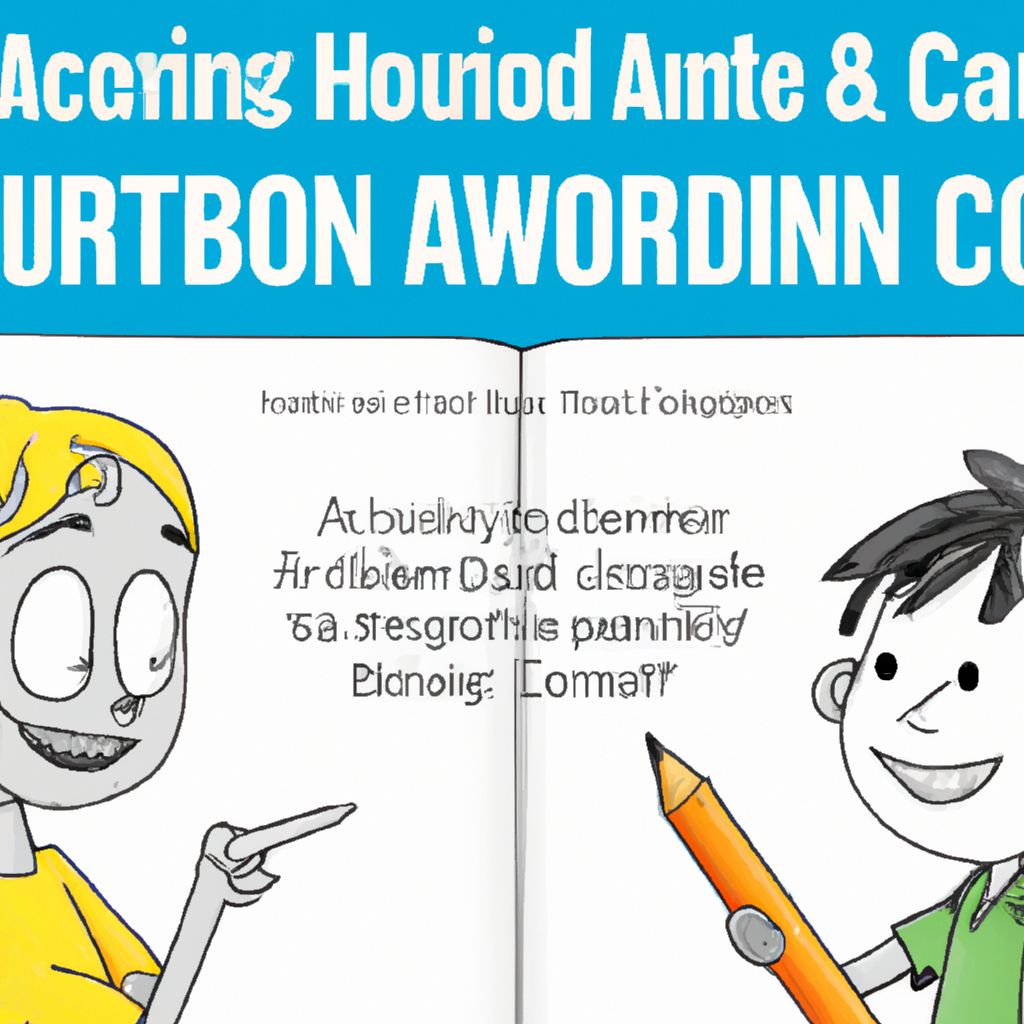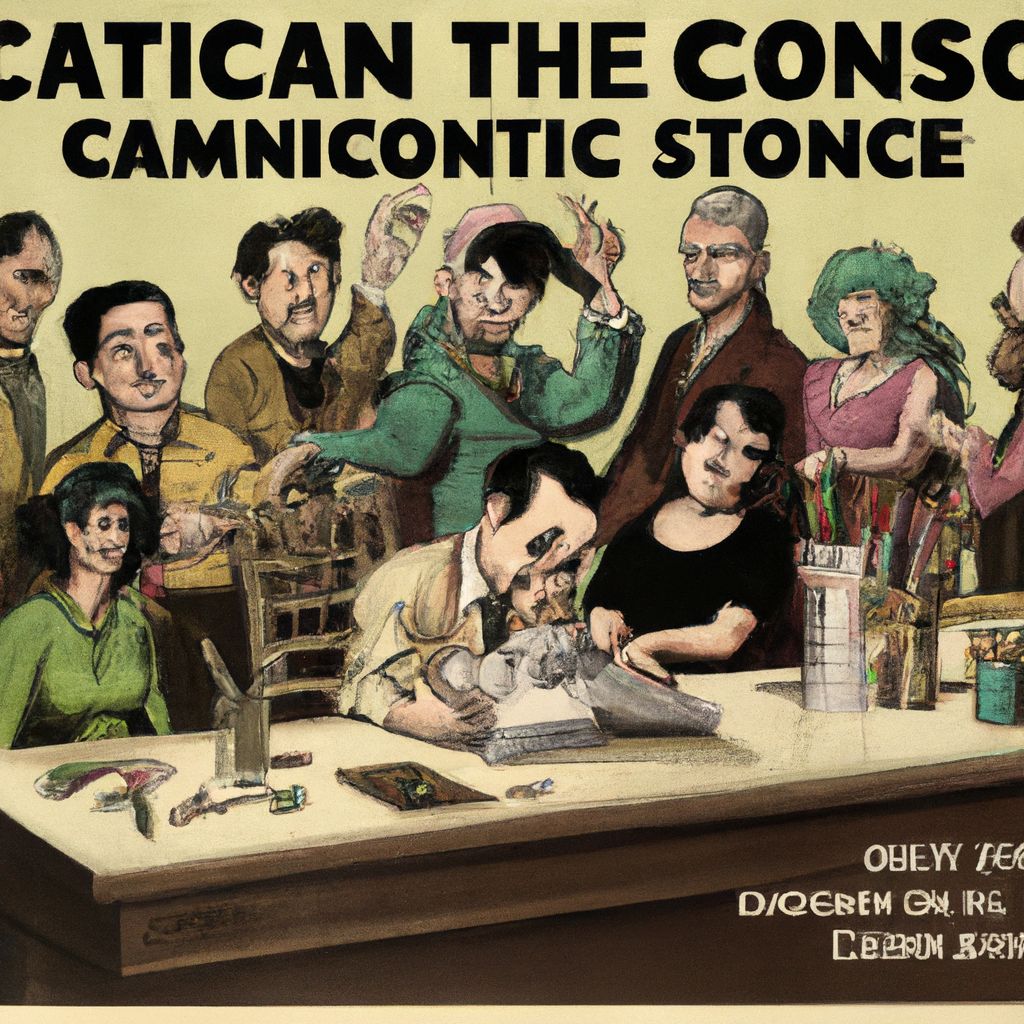- Introduction to Cartooning
- Types of Cartooning Styles
- Famous Cartoonists and their Styles
- Exploring Cartooning Techniques
- Creating Your Own Cartooning Style
- The Role of Digital Tools in Cartooning
- Understanding the Impact of Cartooning Styles on Audience
- Conclusion
Introduction to Cartooning

Cartooning is a unique form of art that has been around for centuries. This artistic style is known for its simplicity and the ability to convey ideas and messages in a visually appealing way. The word 'cartoon' originates from the Italian term 'cartone', which means 'big paper'. The art form was initially used for preliminary sketches in traditional painting, but it has evolved significantly over the years.
The history of cartooning can be traced back to the Middle Ages, when artists used caricatures to depict social and political scenarios. However, the modern concept of cartooning emerged in the 19th century with the advent of print media. The first newspaper cartoon was published in 1843 in the American publication 'The Lantern'. This marked the beginning of cartooning as a powerful tool for visual communication and storytelling.
"Cartoons can convey complex messages with just a few lines and strokes. They are an effective medium for satire, humor, and social commentary. Cartoons have the power to make people think and reflect on various issues in a lighter vein." - Anonymous Cartoonist
Cartooning plays a crucial role in storytelling. With their unique ability to simplify complex ideas and evoke emotions, cartoons are widely used in comics, animations, and graphic novels. They help to enhance the narrative and engage the audience. The visual narrative technique of cartooning is a powerful tool in both traditional and digital media.
Cartoons are also essential in visual communication. They are used in advertisements, infographics, and educational materials to make the content more engaging and easier to understand. They can break down complex information into simple, digestible chunks. The combination of text and images in cartoons can stimulate the visual thinking process, making learning more effective.
In terms of the global market, the cartoon industry has seen substantial growth over the years. According to the report by Grand View Research, the global animation market size was valued at USD 259.0 billion in 2018 and is expected to grow at a compound annual growth rate (CAGR) of 4.1% from 2019 to 2025.
Source: Grand View ResearchTypes of Cartooning Styles
There are several types of cartooning styles that have developed over time. Each style has its own unique characteristics and is used in different contexts. Let's explore some of these styles:
- Newspaper Comic Strips
- These are a series of drawings arranged in interrelated panels to display brief humor or form a narrative. They are often serialized, with some popular examples including "Peanuts" by Charles M. Schulz, "Calvin and Hobbes" by Bill Watterson, and "Garfield" by Jim Davis.
- Political and Editorial Cartoons
- These are a type of illustrations that contain a commentary that usually relates to current events or personalities. The satire and humor used in these cartoons are used to expose and criticize the actions of politicians or public figures. An example would be the works of the Pulitzer Prize-winning cartoonist, Mark Fiore.
- Gag and Single-Panel Cartoons
- Gag cartoons, also known as single-panel cartoons, are a popular style of cartooning that typically contains a single drawing and a caption underneath or a speech balloon. The humor is delivered in a single punchline. "The Far Side" by Gary Larson and "New Yorker" cartoons are classic examples of this style.
- Animated Cartoons
- An animated cartoon is a film for the cinema, television or computer screen, which is made using sequential drawings. With the advent of digital technologies, animated cartoons are now created using computer software. Some of the most popular animated cartoons include "Tom and Jerry," "The Simpsons," and "Family Guy."
Each of these styles has its own set of rules and conventions. However, they all share the common goal of communicating a message through the power of visual storytelling.
Famous Cartoonists and their Styles

Several cartoonists have made a significant impact on the world of cartooning with their distinctive styles. Their works have been influential not just within the field, but also in shaping popular culture. Here are a few notable examples:
- Charles M. Schulz (Peanuts)
- Charles M. Schulz, the creator of "Peanuts," is known for his simple yet expressive style. His characters, including the iconic Charlie Brown and Snoopy, are drawn with minimal lines but convey a wide range of emotions. Schulz's humor is gentle and philosophical, often touching upon the deeper aspects of life. His work has influenced countless artists and continues to be beloved by audiences worldwide.
- Walt Disney (Disney Animation)
- Walt Disney revolutionized the world of animated cartoons. He introduced the concept of full-length animated feature films, starting with "Snow White and the Seven Dwarfs." Disney's style is characterized by its high level of detail, fluidity of movement, and anthropomorphized animal characters. Disney's influence is vast, with his company continuing to be a major player in the global animation industry.
- Matt Groening (The Simpsons)
- Matt Groening, the mind behind "The Simpsons," brought an edgy and satirical flavor to mainstream animation. His style is marked by its bright colors, bold lines, and exaggerated features, like the signature overbite and large eyes of the Simpson family. Groening's work, particularly "The Simpsons," has had a profound influence on adult-oriented animated shows.
These cartoonists and their styles have not only entertained millions of viewers around the globe but also inspired a new generation of artists. They have pushed the boundaries of what is possible in cartooning, demonstrating the art form's potential for depth and sophistication.
Exploring Cartooning Techniques

Cartooning involves a variety of techniques that help to shape the style and tone of the work. Here are some of the most commonly used techniques:
- Caricature
- Caricature is a technique that exaggerates or simplifies the physical features of a person or object to create a humorous or satirical effect. This technique is often used in political cartoons or celebrity caricatures. Caricature serves to make the subject instantly recognizable and impactful to the viewer.
- Satire
- Satire is a technique that uses humor, irony, or ridicule to criticize or mock people's stupidity or vices, particularly in the context of contemporary politics and other topical issues. Satirical cartoons often use visual metaphors and caricatures to comment on social and political situations. This technique helps to make serious issues more approachable and digestible for the audience.
- Anthropomorphism
- Anthropomorphism is a technique that gives human traits, emotions, or intentions to non-human entities such as animals or objects. This technique is widely used in animated cartoons and comic strips. Anthropomorphic characters can be more relatable and engaging to the audience, allowing for a wider range of narrative possibilities.
The effective use of these techniques contributes to the overall style and impact of the cartoon. It allows the cartoonist to express complex ideas and emotions in a visually engaging and accessible way. The choice of techniques can also reflect the cartoonist's unique perspective and creative vision.
Creating Your Own Cartooning Style

Developing a unique cartooning style is a personal and creative journey. It involves exploring different techniques, practicing consistently, and refining your approach over time. Here are some tips to guide you along the way:
- Character Design
- Creating memorable characters is a key aspect of cartooning. Think about the personality traits and physical characteristics that will make your characters stand out. Experiment with different shapes, sizes, and proportions. Remember, consistency is important in character design, especially if you're working on a comic strip or animation.
- Color Scheme
- The choice of colors can greatly influence the mood and tone of your cartoon. Bright, saturated colors can create a lively and energetic atmosphere, while muted colors can evoke a more serious or melancholic tone. Experiment with different color combinations and see what works best for your theme and characters.
- Line Work
- The quality of your lines can add a lot of personality to your cartoons. Bold, heavy lines can make your drawings look more dynamic and assertive. On the other hand, thin, delicate lines can give your cartoons a soft, subtle feel. Experiment with different line weights and styles to see what suits your vision the best.
- Visual Humor
- Humor is a key element in many cartoons. This can be achieved through humorous situations, visual gags, or witty dialogues. Keep in mind that humor can be subjective, so what's funny to you might not be funny to everyone. However, don't be afraid to express your unique sense of humor through your cartoons.
Keep in mind that developing your own style takes time and patience. Don't be discouraged if your style doesn't emerge immediately. Instead, focus on improving your skills and gaining a better understanding of the art form. Over time, your unique style will naturally develop as a reflection of your personal tastes and experiences.
The Role of Digital Tools in Cartooning

The advent of digital tools has significantly transformed the field of cartooning. While traditional methods of drawing with pen and paper are still widely used, many cartoonists have embraced digital tools for their versatility and convenience.
- Adobe Illustrator
- Adobe Illustrator is a vector graphics software widely used for creating cartoons. It offers a wide range of tools for drawing, coloring, and texturing. One of the main advantages of Illustrator is that it allows for scalable vector artwork, meaning the quality of the image remains the same regardless of how much it's resized. This is especially useful for cartoons that may need to be reproduced at various sizes.
- Procreate
- Procreate is a raster graphics editor app for iOS and iPadOS designed for creative professionals. It's known for its intuitive interface, extensive brush library, and powerful layering system. Many cartoonists appreciate the natural feel of drawing in Procreate, as well as its ability to mimic various traditional media.
- Clip Studio Paint
- Clip Studio Paint is a family of software applications used for the digital creation of comics and cartoons. Its strengths lie in its robust set of features dedicated to the needs of illustrators and comic artists, including panel layout tools, perspective rulers, and a vast library of screen tones.
Digital tools have not only made the process of creating cartoons more efficient but also opened up new possibilities in terms of style and presentation. For instance, digital tools allow for easy experimentation with colors and effects, which can lead to unique aesthetic outcomes.
Moreover, digital platforms have made it easier than ever for cartoonists to share their work with a global audience. Online platforms like webtoons and social media have given rise to a new generation of digital cartoonists who are pushing the boundaries of the art form.
Despite the advantages of digital tools, it's important to remember that the essence of cartooning lies in the creative ideas and storytelling skills of the artist. Whether you're working with traditional or digital tools, a strong foundation in drawing and visual storytelling is crucial.
Understanding the Impact of Cartooning Styles on Audience

The style of a cartoon can greatly influence how it's perceived by the audience. It plays a crucial role in setting the tone, conveying the message, and engaging the viewers. Let's delve into how different cartooning styles can affect audience perception and engagement.
- Style and Tone
- The style of a cartoon can set the overall tone of the work. For instance, a cartoon with a simple and playful style can convey a sense of fun and lightheartedness, while a cartoon with a more detailed and realistic style might be perceived as serious or dramatic. The tone, in turn, can influence how the audience responds to the cartoon. It's important for the style and tone to be aligned with the intended message of the cartoon.
- Style and Engagement
- Engaging the audience is a key goal in cartooning. The style of the cartoon can greatly affect the level of audience engagement. A unique and visually appealing style can attract viewers and make them want to see more. On the other hand, a style that's difficult to understand or visually unappealing might deter viewers. It's important for cartoonists to consider their target audience when developing their style.
- Style and Message
- The style of a cartoon can also influence how effectively the message is conveyed. For instance, a cartoon that uses a lot of visual metaphors and symbolism might require more interpretation from the audience, while a cartoon with a straightforward style might be more accessible and easy to understand. The choice of style can either enhance or hinder the communication of the message.
Understanding the impact of style on audience perception and engagement is crucial for any cartoonist. It's important to consider the intended audience and message when developing your style. Remember, the goal of cartooning is not just to create visually appealing artwork, but also to communicate ideas and stories in an engaging and effective way.
Conclusion

In conclusion, style is a fundamental aspect of cartooning. It shapes the tone, influences audience engagement, and plays a crucial role in conveying the intended message. A distinctive style can set a cartoonist apart and make their work instantly recognizable.
As an aspiring cartoonist, it's important to explore different styles and techniques. Don't be afraid to experiment and push your creative boundaries. Remember, your style is a reflection of your unique perspective and creativity. So, keep learning, practicing, and evolving.
Ultimately, the journey to finding your unique style in cartooning is a rewarding process that can lead to personal growth and creative fulfillment. So, embrace this journey and look forward to where your unique style will take you in the fascinating world of cartooning.






